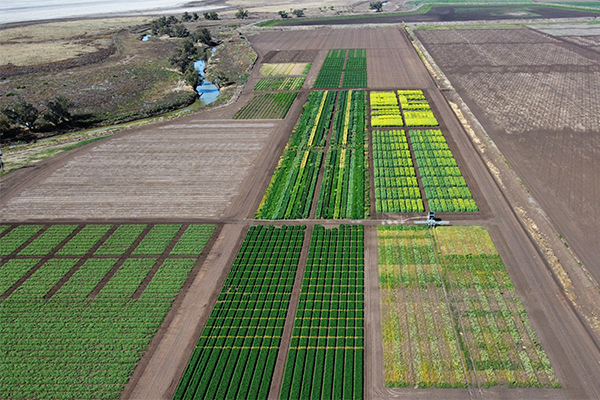A new and unique biostimulant has shown in trials conducted across Australia that it can boost yields in a wide range of crops by providing a season-long source of supplemental nitrogen with just one application.

Utrisha® N has been developed by Corteva Agriscience and is a naturally occurring bacteria, Methylobacterium symbioticum, that lives within the plant and converts atmospheric nitrogen to plant-available ammonium.
Plants are colonised by Utrisha N through a foliar application and this can occur in as little as three days depending on temperature and species. This conversion process uses no plant energy and one application lasts for a full growing season.
Corteva Agriscience Plant Health Manager, Dan Cornally, said Utrisha N was the realisation of years of research and development.
“Utrisha N has been brought to market backed by Corteva’s rigorous development standards and numerous field trials locally and around the world to demonstrate its effectiveness in a wide variety of crops,” he said.
“It is now available in Australia and will be the first offering in our new range of plant health products which provide innovative solutions for growers.”
Dan said early application of Utrisha N with its ability to provide supplemental nitrogen in an annual crop’s life cycle, allowed growers to hedge against unseasonal conditions.
“If growers get Utrisha N out early, they know they have at least partially applied the topdressing nitrogen requirement,” he said.
“If the growing season gets too wet or dry, or fertiliser availability is compromised, Utrisha N will be in the crop and providing some level of nitrogen.”
Trial data and economic returns
To verify the results seen overseas, field trials were conducted across Australia in 2023 at sites in New South Wales, Victoria, South Australia, Western Australia and Queensland.
One example is a field-scale trial in Calingiri, WA, conducted to determine if using Utrisha N in conjunction with Flexi-N® increased grain yield in wheat. All treatments, including the Nil plots had an application of 70 kg per hectare of nitrogen as a base treatment. Treatments were applied as a top-dressing at GS32 growth stage of wheat.
Average wheat yield across 16 replications from Flexi-N alone was 3.11 tonnes per hectare (t/ha), compared to 3.27 t/ha where Utrisha N was added. This was a statistically significant yield increase of approximately 5 per cent.
“While individual results will vary due to rainfall, background nutrition, grower programs and other factors, close to 100 small trial and farm demonstrations have been conducted across Australia to verify yield and quality gains provided by Utrisha N in a variety of domestic crops and conditions,” Dan said.
“What we’ve seen is Utrisha N performing as we would expect, based on the results of overseas experience, where it has been established in the market for some time.”
Flexibility in nitrogen management
The ability to mix Utrisha N with many crop inputs means this application can be built into the field management program planned for that crop. Farmers and agronomists can then plan how best to manage the rest of the nutrition program to maximise yield and quality.
“There are also environmental programs being implemented which reward growers for reducing their inputs and/or improving sustainability,” Dan said.
“Utrisha N may have a beneficial role to play in those programs and we will continue to work with growers to help them achieve their sustainability goals and understand if this is an appropriate way for their operation to use the product.”
This article was written by Corteva Agriscience for Seasons magazine.
Please note: this article contains information of a general nature, and does not take into account your personal objectives, situation or needs. Before acting on any information, you should consider the appropriateness of the information provided, and seek advice on whether it is fit for your circumstances.